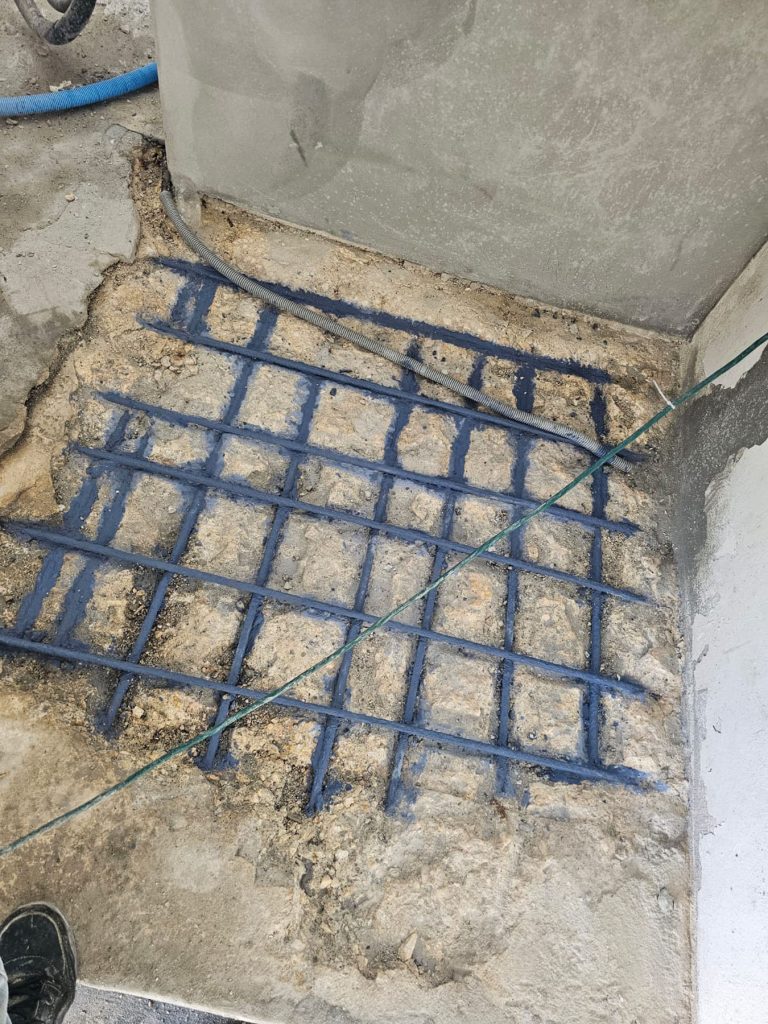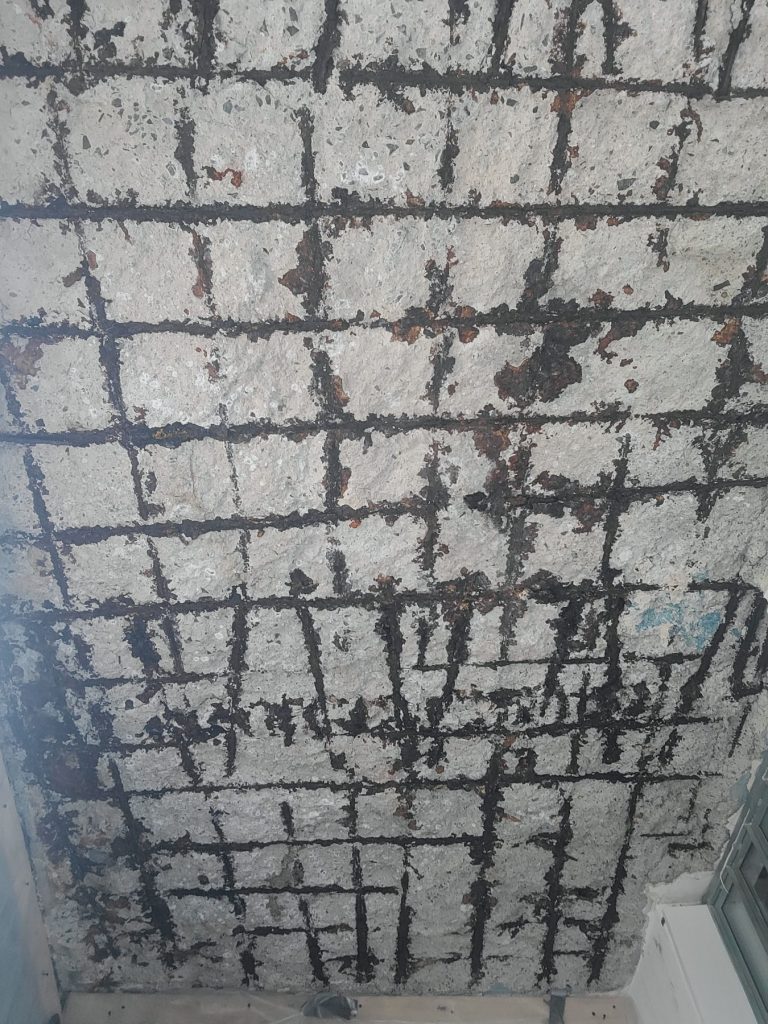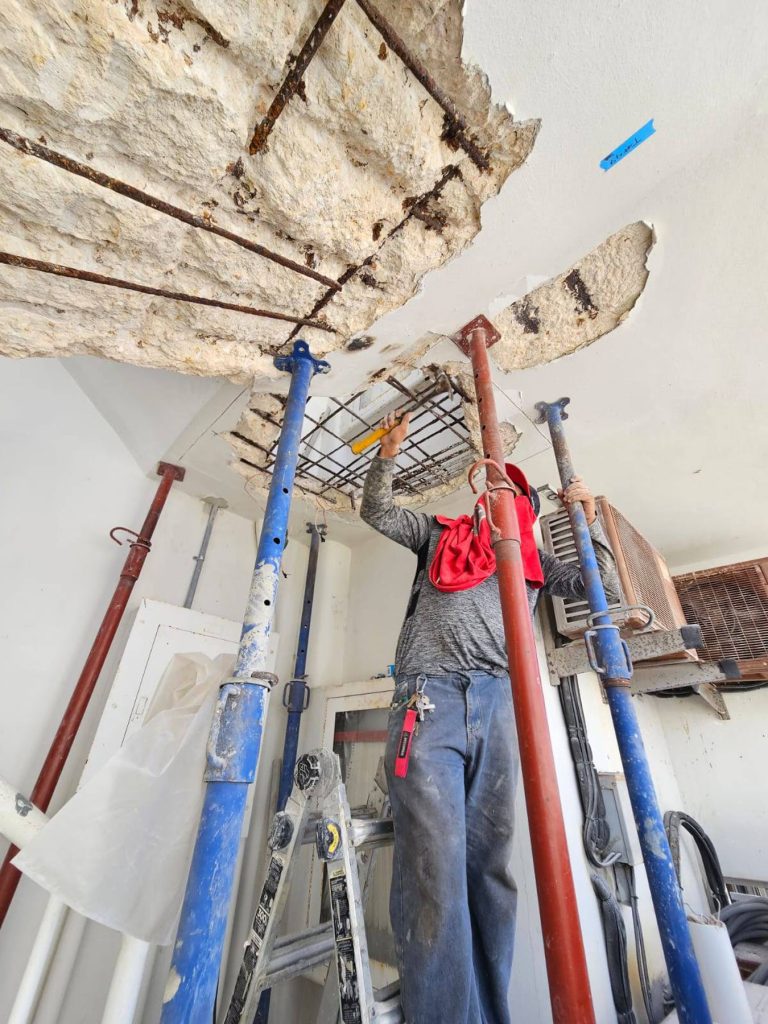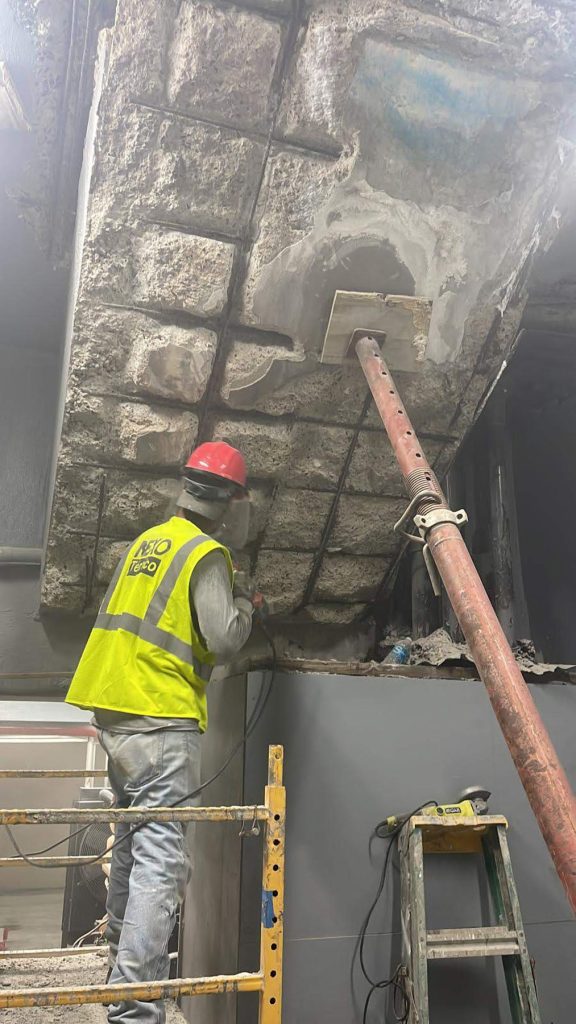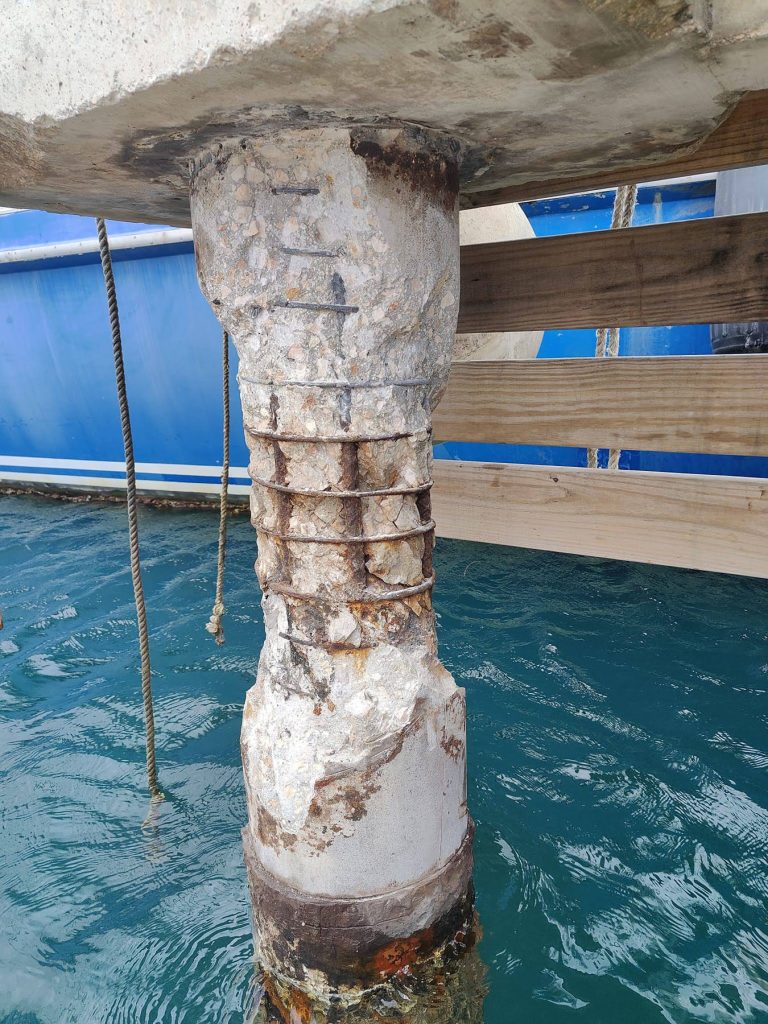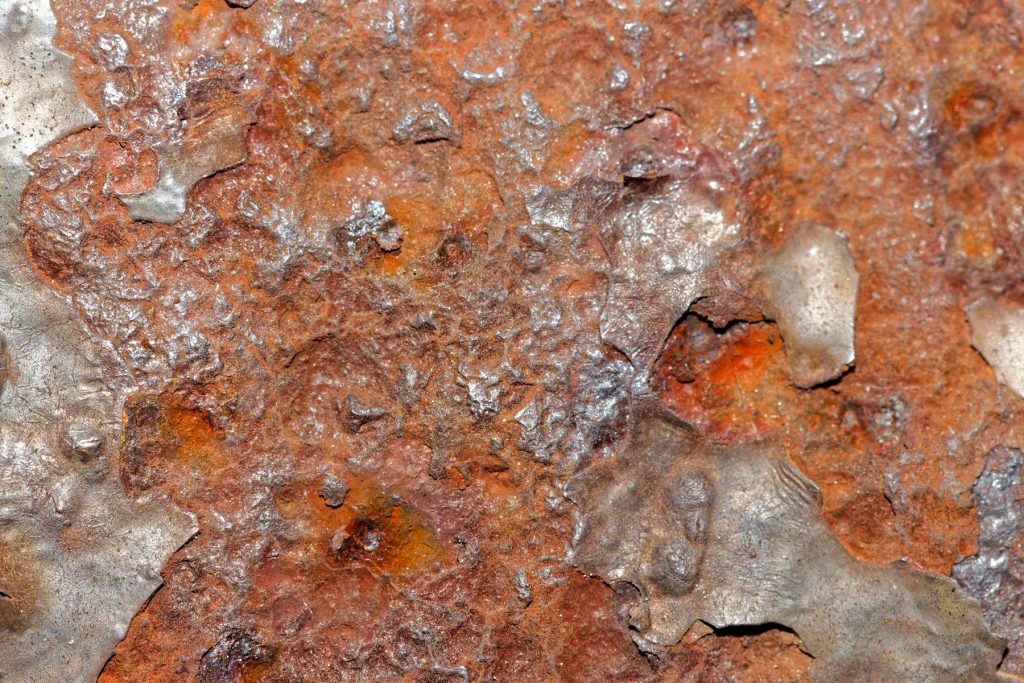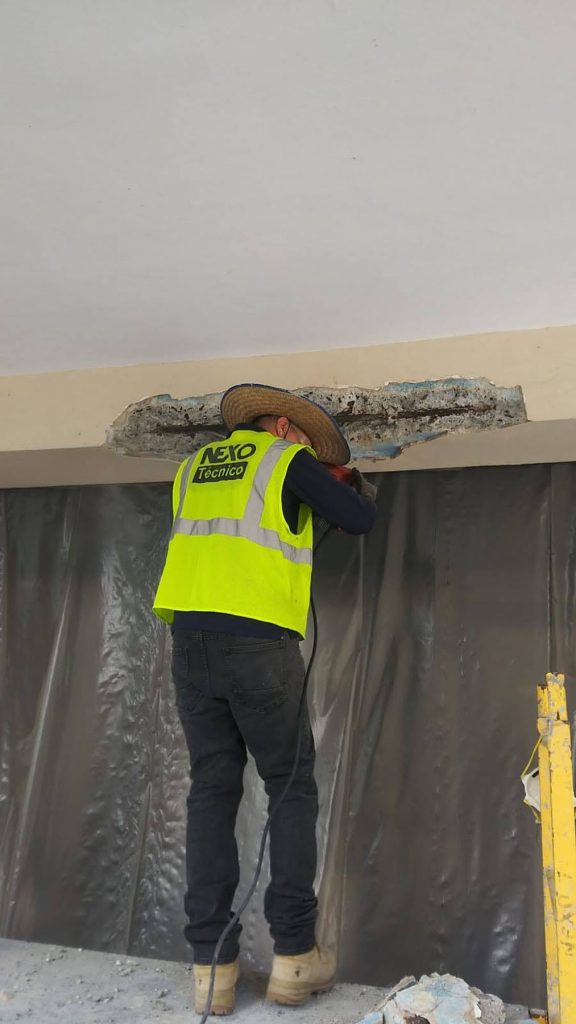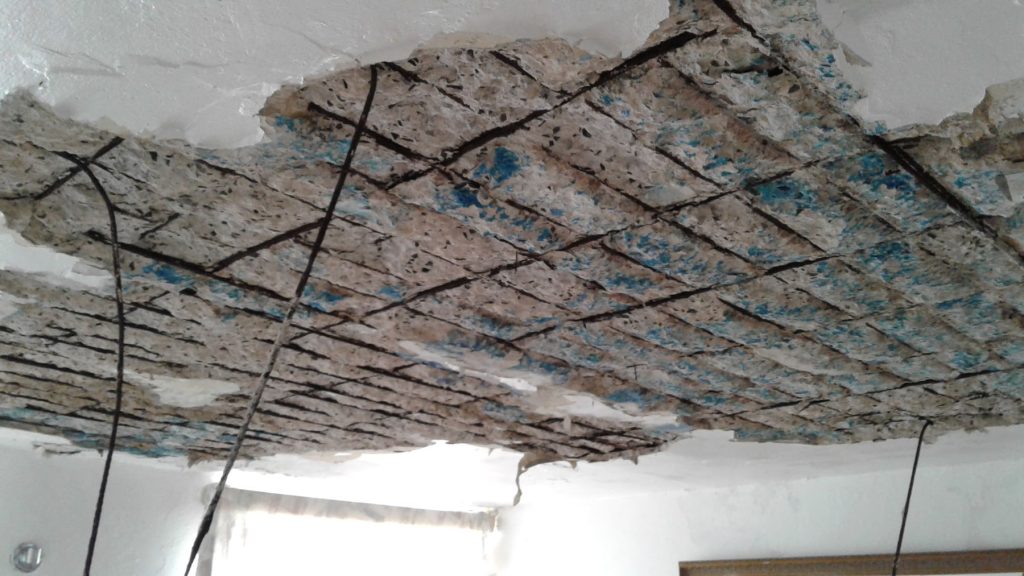
Reinforcing Steel and Concrete are a match made in heaven. The chemical and structural properties of concrete and reinforcing steel are like a symbiotic organism. Believe it or not, concrete and steel get along extremely well together…. until it is not. But when it is not, the cause is our fault. Did you know that when pouring concrete around steel it creates a layer over the steel that protects the steel from corrosion? It is called the passivating layer. A layer that prevents corrosion from starting in the reinforcing steel.
In terms of strength, steel gives concrete structural properties that improve the usability of this stone like compound. Allowing architects and engineers to create spectacular shapes in architectural wonders in sizes not previously feasible when using stone or concrete alone.
Now going back to corrosion…
Concrete corrosion occurs when the reinforcing steel inside it comes into contact with chemicals that promote the beginning of the corrosion reaction. In Puerto Rico the most common cause of steel corrosion is the atmosphere or air which carries high levels of chlorine compounds from the sea. These chemicals are not only a cause for corrosion but also contaminate all other materials when mixed with water, creating an ideal environment where steel corrodes quickly.
This commonly happens in the presence of moisture and oxygen, which react with the steel, causing it to rust and expand. As the rust expands, it creates pressure that cracks the concrete, allowing more moisture to penetrate and exacerbate the corrosion process. In other words, if corrosion is not treated early, its effects will increase until it causes structural damage. Because this topic is so recurring in buildings, we present this Blog Post with some observations and general technical recommendations. If you want advice on a particular case, do not hesitate to contact us.
Corrosion Prevention
Regular inspections and maintenance are crucial to identify and address any signs of corrosion promptly. By taking these preventive measures, the durability and structural integrity of concrete can be preserved.
The best way to avoid corrosion is proper construction methods, particularly practices like using concrete with low permeability and steel protection with adequate mixes, preventing moisture and chemicals from reaching the steel.This is the best and most cost effective way to prevent corrosion.
Strategies for new buildings
Certainly there are some measures to prevent corrosion in new constructions
- Consider a good concrete cover around the reinforcement steel and avoid moisture concentrations.
- High quality concrete and finish that guarantees a surface with low porosity
- An alternative, although of little use, can be the adding corrosion-inhibiting admixtures to concrete can help reduce the corrosion rate of reinforcing steel. These admixtures form a protective layer on the steel surface, inhibiting the corrosive process.
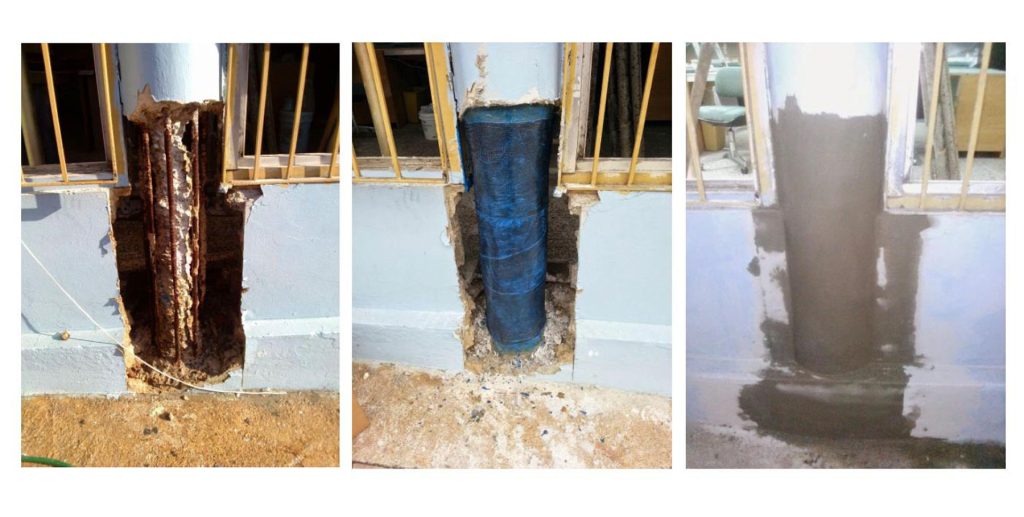
Treatments When Repairing is Optional or not Feasible
When corrosion appears, some treatment measures may include:
- Application of migrating corrosion inhibitors: Use chemicals that reduce the corrosion rate and protect the steel.
- Adding sacrificial anodes to minimize the continuation of the corrosion.
- Encapsulation of the corroded steel.
Repairs
For structural repairs, the following measures can be considered:
- Replacement of corroded steel: Remove and replace the reinforcement steel affected by corrosion.
- Additional reinforcement: Add additional reinforcement, such as bars or mesh, to compensate for the loss of section due to corrosion.
- Concrete repair: Perform repairs on the damaged concrete with proper techniques that include:
- Being aware of the incipient anode effect.
- Remove contaminated concrete.
- Cleaning and corrosion removal all around the rebar, using appropriate techniques.
- Apply corrosion inhibiting products to the remaining rebar.
- Apply corrosion inhibitors to the remaining concrete.
- Apply repair mortar or structural resins.
To select and apply the most appropriate products, the expertise of professionals comes into play, avoiding unsuccessful repairs that lead to costly recurrences for owners.
Specialized Application
Specialist engineers play a critical role in managing corrosion in concrete. Expertise plays a fundamental role in identifying signs of corrosion and applying preventive or corrective measures as necessary, such as recommending the use of protective coatings or repairing affected areas, identifying factors that promote corrosion, correcting them and supervising them in great detail. the corresponding technique to guarantee the durability of the repairs, considering the complete removal of polluting residues, the quality of the materials and the application technique and of course the aesthetic finish of the work.
In the Puerto Rican market there is a wide range of products for these applications, including brands such as BASF, Euclid, Sika, Mapei and Protectosil. The important thing is that you know which one to choose according to the needs of the case, which is why the expertise of professionals is a key issue in this type of project.
Finally, remember that regular inspections, maintenance, and prompt repairs gain greater strength to address any signs of corrosion and maintain the structural integrity of coastal buildings.
At Nexo Tecnico, we specialize in concrete repair with the expertise to handle all your structural needs. From minor fixes to major renovations, our team is dedicated to providing top-notch solutions in Puerto Rico and the Caribbean. Whether it’s restoring stability to buildings or ensuring long-lasting durability, trust Nexo Tecnico for all your structural repair requirements.
